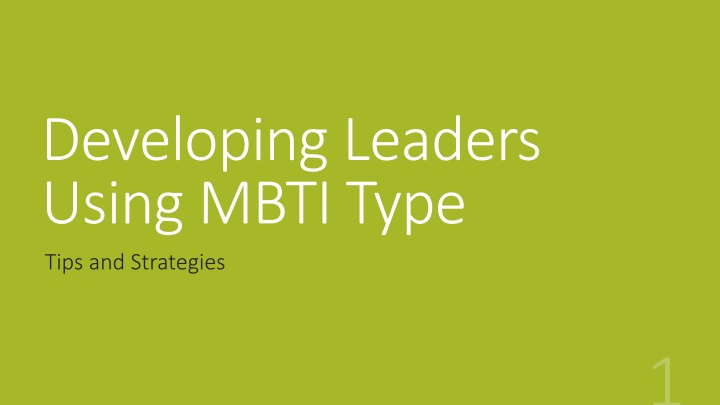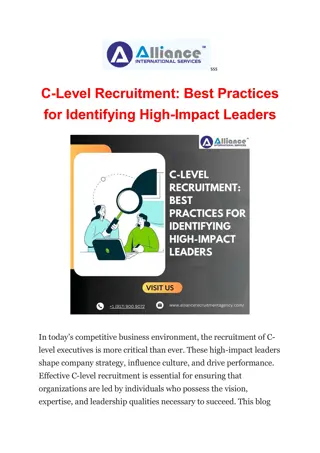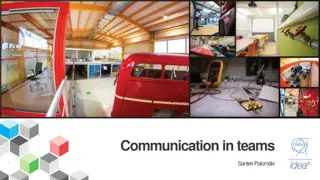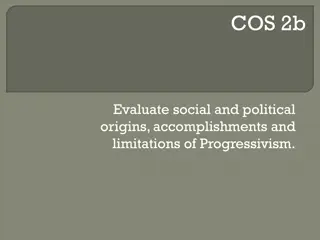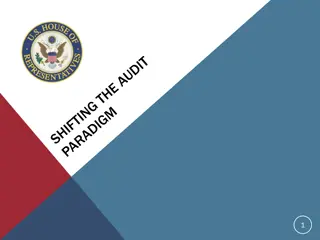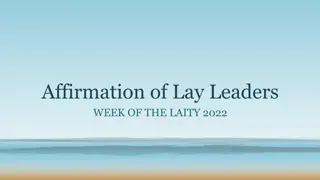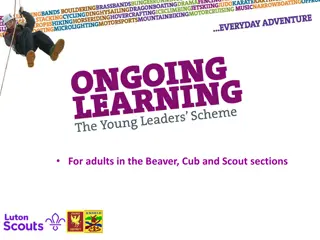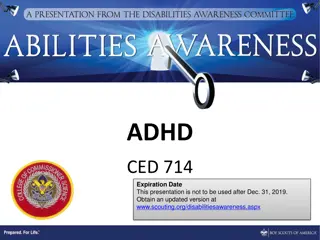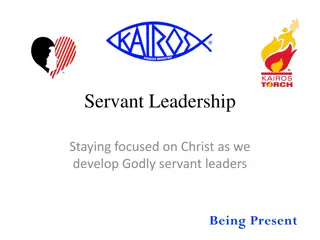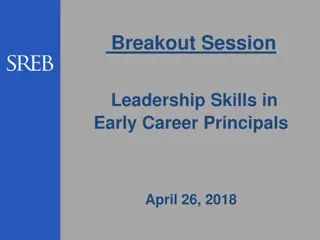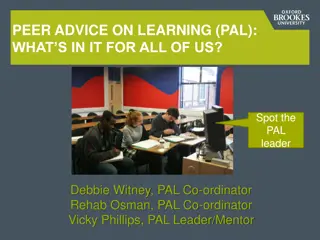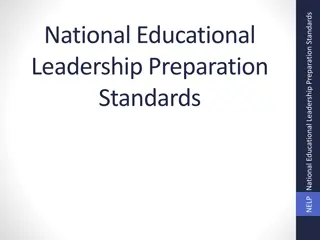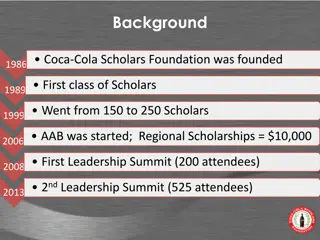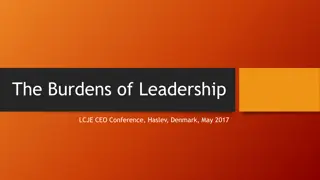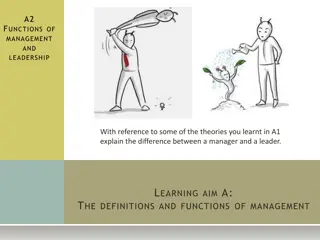Developing Leaders Using MBTI: Tips and Strategies
Explore the significance of leadership and the effectiveness of using MBTI in leadership development. Discover various activities like icebreakers and engaging exercises to enhance leadership skills. Understand the essence of leadership in successful organizations and the key elements that contribute to their effectiveness.
Download Presentation

Please find below an Image/Link to download the presentation.
The content on the website is provided AS IS for your information and personal use only. It may not be sold, licensed, or shared on other websites without obtaining consent from the author.If you encounter any issues during the download, it is possible that the publisher has removed the file from their server.
You are allowed to download the files provided on this website for personal or commercial use, subject to the condition that they are used lawfully. All files are the property of their respective owners.
The content on the website is provided AS IS for your information and personal use only. It may not be sold, licensed, or shared on other websites without obtaining consent from the author.
E N D
Presentation Transcript
Developing Leaders Using MBTI Type Tips and Strategies
Agenda 1. Why Leadership Matters 2. Why the MBTI instrument works so well in Leadership Development 3. Activities you can use with leaders Icebreaker & Leadership Diary Step I Polarity Activity Step II Strengths & Challenges
Effective Organizations Have Talented team members Good managers/coaches Engaged team members Effective competitive strategies Monitoring systems
Effective Organizations Have Talented team members Good managers/coaches Leadership controls these elements of effectiveness. Engaged team members Effective competitive strategies Monitoring systems
What is Leadership? A process of social influence, which maximizes the efforts of others, towards the achievement of a goal.
What is Leadership? A process of social influence, which maximizes the efforts of others, towards the achievement of a goal. Persuasion NOT domination Influence NOT job title Others NOT self
Why MBTI Type? Balance External Internal Present Future Logic Values Decision Making Information Gathering
Why MBTI? Identify a leader s natural approach and preferred ways of acting. Consider strengths and potential challenges that may result from these preferences. Take steps to be a reflective, rather than reflexive leader.
Icebreaker What words describe the BEST worked with? BEST leader you have
Icebreaker What words describe the WORST worked with? WORST leader you have
Envisioning the Future What type of leader do you want to be? How do you want others to describe you?
Type Preferences & Polarities Step I Activity
Polarity Thinking Barry Johnson Polarities issues that have two or more correct answers that are interdependent. Ideal solutions are not either-or, but both-and Helps examine the potential upsides and downsides of your natural approach, and the benefit of flexing your style.
Leadership Polarities Throughout the literature on leadership and organization effectiveness, two sets of polarities are frequently highlighted. 1. Present-oriented, practical, short-term, consistency, focus on reality and facts vs Future-oriented, visionary, long-term, creativity, focus on possibilities 2. Task oriented, rational, analytical, mastery oriented, tough-minded vs People oriented, inspirational, interpersonally sensitive, values oriented
Higher Purpose: Effective Leadership Potential Upside of Sensing in Leadership Potential Upside of Intuition in Leadership Executing tasks in an step-by-step way Accurate understanding of current situation Practical Focus on efficiency Identify future opportunities Seek out innovative solutions Embrace change Sensing and Intuition Can be unrealistic Overlook pragmatic considerations May resist standard procedures May not see the need for change Overlook long-term needs in favour of day-to-day ops Negative results from over-focusing on Sensing to the neglect of Intuition Negative results from over-focusing on Intuition to the neglect of Sensing Deeper Fear: Poor Leadership
www.psychometrics.com/knowledge- centre/myers-briggs/leadership/
Polarities and Leaders (Function Pairs) ST COMMON PITFALLS SF COMMON PITFALLS Operating too independently, and failing to involve others. Allowing day-to-day issues get in the way of long-term planning. Allowing day-to-day issues get in the way of long-term planning. Not dealing with conflict. Failing to explore alternative ideas and perspectives Being unaware of the different needs of team members.
Polarities and Leaders (Function Pairs) NT COMMON PITFALLS NF COMMON PITFALLS Operating too independently, and failing to involve others. Not dealing with conflict. Overlooking practical issues that may hinder implementation of the vision. Overlooking practical issues that may hinder implementation of the vision
Leadership Polarities Activity Step 1: List the potential upsides and downsides of your preferences effective leader? preferences for being an Step 2: List the potential upsides and downsides of your non effective leader? non- -preferences preferences for being an Step 3: Which polarities (S-N, T-F) do you currently manage well? (You are able to realize the potential upsides of the polarity, with few downsides) Step 4: Which polarities do you struggle with? (You have difficulty gaining the upsides of the polarity, and overuse one of the sides)
Leadership Polarities Higher Purpose: Upsides of Sensing Upsides of Sensing Upsides Upsides of Intuition of Intuition Downsides of Sensing Downsides of Sensing Downsides of Intuition Downsides of Intuition Deeper Fear:
Step I Resources Introduction to Type and Leadership, by Sharon Lebovitz Richmond MBTI Step I Personal Impact Report
Step II & Leadership A leader s unique expression of type preferences
Why Step II Provides insight into a leader s distinctive ways of expressing type. Particular patterns of facets within a dichotomy may reflect ways in which less- preferred aspects of personality are expressed. Targetable areas for focusing change.
Step II Facets & Leadership Issues Communication Building relationships Work environment E-I Facets Innovation and Execution Change and Consistency Future and Present S-N Facets Decision-making Getting buy-in Conflict resolution T-F Facets Planning and Managing fluid situations Organizing work and directing teams Project management J-P Facets
Leadership Strengths & Challenges 1. Identify the task/issue the leaders want to focus on to increase their leadership effectiveness? (Communication, Influence, Conflict Resolution, Decision-making, Holding people accountable, Building engagement, Managing change ) This provides focus to the discussion. 2. Have leaders create two lists: How do your facet preferences support you in this area? How do you facet preferences create roadblocks for you in this area?
Leadership Strengths & Challenges FACETS THAT SUPPORT EFFECTIVENESS: Enthusiastic get people excited SUPPORT MY LEADERSHIP FACETS THAT ACT AS ROADBLOCKS MY LEADERSHIP EFFECTIVENESS: Expressive don t give others enough time to share their thoughts/ideas Concrete do not pay enough attention to future challenges Traditional may not be as interested in change as I should be Critical can come across as harsh Methodical can spend time planning and then re-planning ROADBLOCKS TO Concrete have good understanding of the present Practical can apply ideas Reasonable stay objective and impartial Critical test assumptions Scheduled organized
Leadership Strengths & Challenges 1. Identify the task/issue the leaders want to focus on to increase their leadership effectiveness? (Communication, Influence, Conflict Resolution, Decision-making, Holding people accountable, Building engagement, Managing change ) This provides focus to the discussion. 2. Have leaders create two lists: How do your facet preferences support you in this area? How do you facet preferences create roadblocks for you in this area? 3. What will you commit to doing differently? Who could help support/guide you?
Alternative Step II Interpretive Report breaks out facet results that influence: Communicating Making Decisions Managing Change Managing Conflict Have leader highlight key aspects of their style, and the enhancements they are willing to make.
Additional Support Psychometrics Knowledge Centre www.psychometrics.com/knowledge-centre
Thank You Questions? sbakker@psychometrics.com LinkedIn: Shawn Bakker
